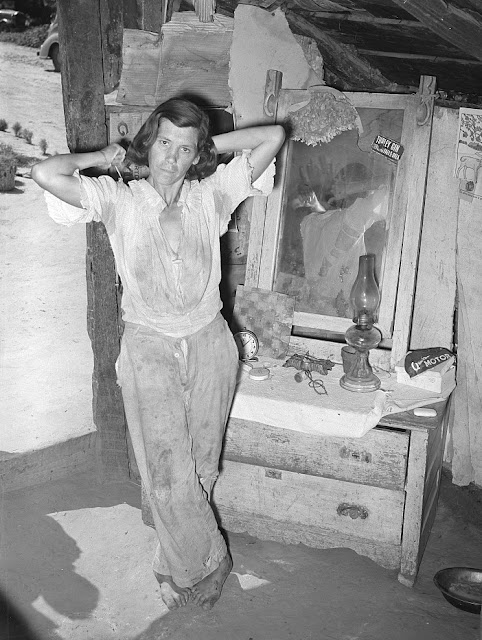--U.S. Senator Sherman Minton (D-Indiana), in The Hancock Democrat (Greenfield, Indiana), October 20, 1938.
Above: "Haying," an oil painting by Emily Poirius, created while she was in the WPA, ca. 1935-1943. Image courtesy of the General Services Administration and the Oklahoma City Museum of Art.
Trump and the GOP are driving farmers into bankruptcy
Trump and the GOP are driving farmers into bankruptcy
American farmers are declaring bankruptcy more frequently and "The Wall Street Journal points to Trump's trade war with countries like China and Mexico as a key driver in the rising rate... Soybean and hog prices fell after those countries imposed retaliatory tariffs on the United States in response to Trump's steel and import tariffs..." (See, "Midwest farmers going broke at record rates thanks to Trump's trade war: Bankruptcies have doubled in the biggest farm states, with falling prices and the trade war largely to blame," Salon, February 13, 2019.)
Trump's trade war, of course, is just one policy in a long list of callous, bumbling, and give-everything-to-the-rich policies that Republicans (and Corporate Democrats) have implemented over the past many decades. These policies have weakened not only farmers, but also middle & low-income Americans in almost every other profession.
The New Deal and the American farmer
During the New Deal, there were many actions performed, policies enacted, and agencies created to help farmers. The Living New Deal has summaries for many of these programs, for example, the Agricultural Adjustment Act, the Rural Electrification Administration, the Soil Conservation Service, the Farm Credit Act, and the Bankhead-Jones Farm Tenant Act.
These New Deal policies & programs saved many farmers from financial catastrophe. For example, in early 1940, the Bureau of Agricultural Economics--today's Economic Research Service (U.S. Dept. of Agriculture)--reported that farmer bankruptcies dropped, from 1,799 for fiscal year 1938, to 1,422 for fiscal year 1939. "The decrease was a continuation of the decline which has been apparent since 1933, when 5,917 farmer bankruptcies were reported" ("Farmers Hold Bankruptcies to 18-Year Low," The Anniston-Star (Anniston, Alabama), April 14, 1940).
In 1938, U.S. Senator Sherman Minton (D-Indiana), highlighted many of the New Deal benefits enjoyed by farmers: greater independence from monopoly forces; increased farm income and purchasing power; increased farm exports; fewer foreclosures and bankruptcies; better soil; more electricity; and, in Indiana specifically, farm family debt was "scaled down 83.3 per cent by the Farm Security Administration" ("New Deal For Farmer," The Hancock Democrat (Greenfield, Indiana), October 20, 1938). (The Farm Security Administration was another New Deal creation, beginning its life as the Resettlement Administration.)
Minton closed by declaring, "The New Deal's agricultural record is a testament of faith in the destiny of the American farmer. With the New Deal, the farmer will continue to go forward to increased security and income and a more stable market."
But today, unfortunately, we might also add that "without the New Deal, the farmer is more likely to be crushed by debt, as well as falling prices, poorly thought-out trade wars, increased depression and suicide, and crop-destroying climate and water-supply changes."
Above: Many tenant farmers (renters) suffered greatly during the Great Depression and the Dust Bowl. This woman's husband, a former tenant farmer, found a job in the WPA, in Webber Falls, Oklahoma, 1939. Sons of farmers often found jobs in the CCC, and were required to send most of their pay back to their impoverished families. There was also the Bankhead-Jones Farm Tenant Act (1937), which helped some tenant farmers by providing low-interest loans. Photo by Russell Lee of the Farm Security Administration, provided courtesy of the Library of Congress.
Above: Using an Allis-Chalmers tractor to tow a Caterpillar grader, the CCC and the Soil Conservation Service create a terrace to prevent erosion gullying on this farm in Vernon County, Wisconsin, 1939. Wind and water erosion were severe problems for farmers during the 1930s. Photo courtesy of the Library of Congress.



No comments:
Post a Comment